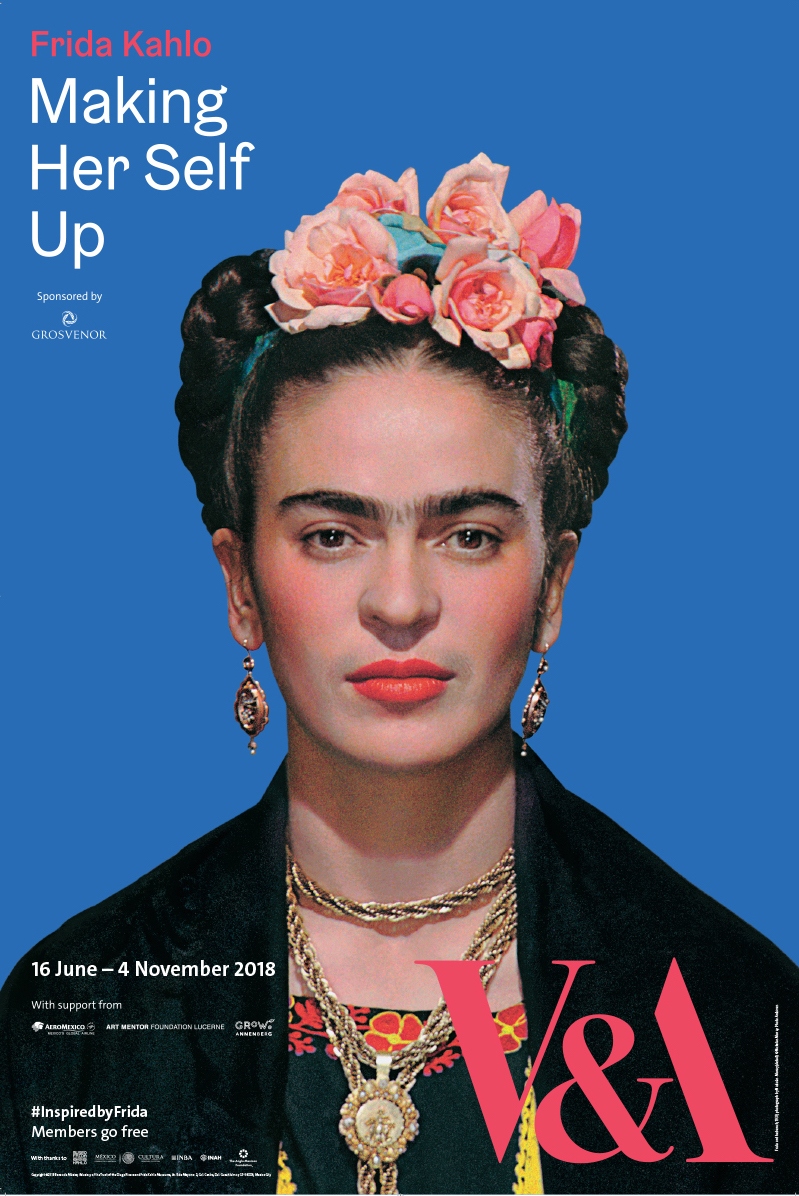This summer, the V&A explores how Frida Kahlo (b. 1907), one of the most recognised and significant artists and women of the 20th century, fashioned her identity. ‘Frida Kahlo: Making Her Self Up’ it’s the first exhibition outside of Mexico to display her clothes and intimate possessions, reuniting them with key self-portraits and photographs to offer a fresh perspective on her compelling life story.
Working in close collaboration with Museo Frida Kahlo, V&A displays more than 200 objects from the Blue House. The exhibition reimagines Kahlo’s home, located in Coyoacán, on the outskirts of Mexico City, where she was born, lived and died exploring her life as a child with her family up to her marriage to Diego Rivera including an album of architectural church photographs by her German father Guillermo Kahlo, early paintings and photographs of Kahlo and Rivera together and with their influential circle of friends including Communist leader Leon Trotsky.
Kahlo’s personal items including outfits, letters, jewellery, cosmetics, medicines and medical corsets were discovered in 2004, 50 years after being sealed in the Blue House by her husband Diego Rivera, the Mexican muralist, following her death in 1954. Exploring Kahlo’s highly choreographed appearance and style, these include 22 distinctive colourful Tehuana garments; pre-Columbian necklaces that Frida strung herself; examples of intricately hand painted corsets and prosthetics which will be displayed alongside film and photography of the artist as a visual narrative of her life.
Included in Kahlo’s make-up selection is her eyebrow pencil ‘Ebony,’ still within its original packaging, which she used to emphasise her signature mono brow, a defining feature of her self-portraits and her favourite lipstick, Revlon’s ‘Everything’s Rosy’ and red nail varnish. Her vividly-coloured cosmetics are striking in the celebrated portraits by photographer Nickolas Muray which show her wearing many of the clothes on display.
Claire Wilcox, Senior Curator of Fashion at the V&A and exhibition co-curator, said:
“Acountercultural and feminist symbol, this show will offer a powerful insight into how Frida Kahlo constructed her own identity. This show is a rare opportunity for visitors, offeringunique access to an archive that has never left Mexico before.”
Circe Henestrosa, Head of the School of Fashion, LASALLE College of the Arts, Singapore and exhibition co-curator, said:
“The exhibition will be a very personal experience with deeply individualised objects on show, particularly her corsets, which she decorated and painted, making them appear as though she had explicitly chosen to wear them. She included them in her art and in the construction of her style as an essential wardrobe item, almost as a second skin.”
Kahlo empowered herself through her art and dress after suffering a devastating near-fatal bus crash at the age of 18, which rendered her bed-bound and immobilised for protracted periods of time. Self-portraiture became the primary focus of her art at this point and she began to paint using a mirror inset into the canopy of her four-poster bed. Much more wasunderstood about Kahlo’s accident after the discovery of the objects in the Blue House. This exhibition illuminates this story through items such as her medicines and orthopaedic aids. Kahlo possessed many supportive bodices and spine back braces and on display will be some of the corsets that she painted with religious and communist symbolism and tragic imagery relating to her miscarriages.
‘Frida Kahlo: Making Her Self Up’ also explores Kahlo’s Mexico and her sense of cultural pride following the Mexican Revolution (1910-20). An enthusiastic desire to embrace a national identity led to her interest in the art and traditions of indigenous people of the country. Kahlo used her striking appearance as a political statement, crafting her identity to reflect her own mestizo (mixed- race) identity and allegiance to Mexican identity.
Mexico flourished in the 1920s and 1930s as a liberal destination that attracted foreign artists, writers, photographers and documentary film makers, in what became known as the Mexican Renaissance. The exhibition shows photographs of traditions in clothing, architecture and the popular arts taken by Edward Weston and Tina Modotti in the 1920s that made an imprint on the Mexican imagination and its perception abroad. There will also be a wall ofex votos, from Kahlo and Rivera’s collection.
‘Frida Kahlo: Making Her Self Up’
Sponsored by Grosvenor Britain & Ireland Room 38 and 38a
16 June – 4 November 2018
www.vam.ac.uk/FridaKahlo
#InspiredbyFrida #LatinBritEs

